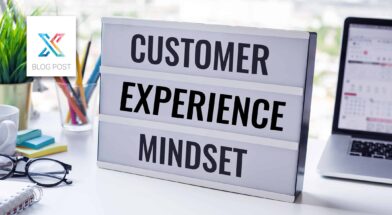Creating value in the sales process goes beyond pitching a product or service—it’s about understanding your client’s unique needs and providing tailored solutions that resonate with their challenges. In today’s competitive landscape, professional services firms that harness the power of client feedback stand out as trusted partners who deliver measurable results.
This second blog in our Value Creation series delves into how customer feedback can transform the sales process into a value-driven journey that strengthens client relationships and boosts win rates.
Understanding the Value of Feedback in Sales
Client feedback is more than just a tool for gauging satisfaction; it’s a strategic asset that provides insights into your client’s business, challenges, and aspirations. By actively listening to your clients, you can uncover opportunities to create value in ways that go beyond the obvious.
Customer feedback software simplifies this process by streamlining data collection, organizing insights, and identifying trends. These tools enable businesses to act on real-time feedback, fostering stronger relationships and driving outcomes.
Step 1. Identifying Client Problems
Think of client feedback as the map that guides you to your destination: becoming the sole solution for The first step in creating value in the sales process is understanding your client’s pain points. This involves deep engagement and active listening during every interaction.
How to Gather Insights:
- Ask Open-Ended Questions: During meetings, ask questions like:
- What are your biggest challenges right now?
- What’s holding you back from achieving your goals?
- Utilize Surveys: Feedback forms and surveys can provide structured data on recurring issues.
- Analyze Trends: Use insights from previous clients to identify common challenges in your client’s industry.
The Importance of Feedback Tools:
Modern customer feedback software, like our Client Feedback Tool (CFT), offers features to assist you with crafting survey questions, monitoring project health, and analyzing trends to uncover issues that clients may not explicitly mention. By understanding their underlying concerns, you can tailor your pitch to address their most pressing needs.
Step 2. Demonstrating Value Through Metrics
Once you’ve identified client problems, the next step is to show how your solution delivers measurable results. Client feedback plays a critical role in building this narrative by providing evidence of success through metrics and data.
Key Strategies:
- ROI Analysis: Use feedback from previous clients to calculate and present potential ROI. For example:
- “Our solution improved operational efficiency by 25% for similar clients.”
- “Our solution improved operational efficiency by 25% for similar clients.”
- Tangible Metrics: Highlight how your offering can directly impact your client’s bottom line, whether through cost savings, revenue growth, or process efficiency.
- Case Studies and Testimonials: Share detailed examples of how your solution has solved problems for others. Use direct quotes and numerical results to build credibility.
A Real-World Example:
A logistics company struggling with delayed deliveries implemented a new scheduling tool recommended by their service provider. According to post-implementation feedback, delivery times improved by 30%, and customer satisfaction scores rose by 20%. Sharing this story with prospects demonstrates the value of actionable feedback.
Step 3. Leveraging Success Stories
Success stories humanize your solution and help prospects envision themselves achieving similar results. These stories build trust and credibility, making your pitch more relatable and persuasive.
How to Build and Use Success Stories:
- Gather Client Feedback: Ask satisfied clients for testimonials about their experience with your product or service.
- Detail the Journey: Highlight the client’s initial challenges, how your solution addressed those issues, and the results achieved.
- Incorporate Visuals: Use graphs, charts, and quotes to make your case studies more engaging.
Social Proof in the Sales Process:
Buyers often rely on reviews, testimonials, and peer recommendations before making decisions. Sharing success stories backed by client feedback can be a powerful way to influence their choice.
The Role of Customer Feedback Software:
Customer feedback software empowers businesses to collect, analyze, and act on feedback at every stage of the sales process.
Features That Drive Sales Success:
- Automated Surveys: Collect real-time insights immediately after key interactions.
- Trend Analysis: Identify recurring themes in client feedback to address common objections proactively.
- Actionable Dashboards: Use visual dashboards to track client sentiment and satisfaction, enabling you to adapt your approach dynamically.
By integrating feedback tools into your sales process, you ensure that every pitch is data-driven and personalized, setting you apart from competitors.
Step 4. Personalizing the Sales Experience
One-size-fits-all sales strategies no longer resonate with today’s clients. Feedback allows you to craft a personalized experience that addresses individual needs and priorities.
How to Personalize Effectively:
- Adapt to Preferences: If feedback indicates a preference for in-person meetings or virtual demos, adjust your approach accordingly.
- Segment Your Audience: Use feedback to categorize clients by industry, size, or specific challenges.
- Tailor Your Messaging: Align your pitch with what matters most to each client. For instance:
- For cost-sensitive clients: Emphasize cost savings.
- For growth-focused clients: Highlight revenue-generating benefits
Step 5. Closing the Feedback Loop
Closing the feedback loop is a crucial step in demonstrating your commitment to client success. It involves acknowledging the feedback you’ve received, acting on it, and communicating the improvements back to the client.
Why It Matters:
- Builds Trust: Clients feel heard and valued.
- Strengthens Relationships: Showing responsiveness fosters long-term loyalty.
- Enhances Credibility: Clients are more likely to recommend you when they see tangible results from their input.
How to Close the Loop:
- Follow Up: After addressing a client’s feedback, provide a summary of the actions taken and their impact.
- Share Successes: Use before-and-after comparisons to show how their feedback drove improvements.
Step 6. Measuring Success
Finally, measure the success of incorporating client feedback into your sales process. Use metrics like:
- Win Rates: Track how personalized feedback-driven pitches increase conversions.
- Client Retention: Monitor repeat business and loyalty as indicators of value creation.
- NPS (Net Promoter Score): Gauge overall satisfaction and likelihood to recommend.
Conclusion
Integrating client feedback into the sales process transforms it from a transactional interaction into a value-driven partnership. By identifying client problems, demonstrating tangible ROI, and leveraging success stories, businesses can create a compelling narrative that resonates with prospects.
Modern customer feedback software plays a pivotal role, enabling you to collect actionable insights, personalize your approach, and deliver measurable results. Ultimately, the value of feedback lies in its ability to build trust, foster loyalty, and set your business apart from the competition.
Ready to unlock the potential of feedback in your sales process? Start listening, adapting, and creating value that wins clients and keeps them coming back. 🚀
Stay tuned for the next installment in our Value Creation blog series, where we’ll dive deeper into the powerful concepts outlined in our eBook, Nine Ways to Create Value with Feedback. Each post will unpack actionable strategies to help you transform client feedback into measurable success.





